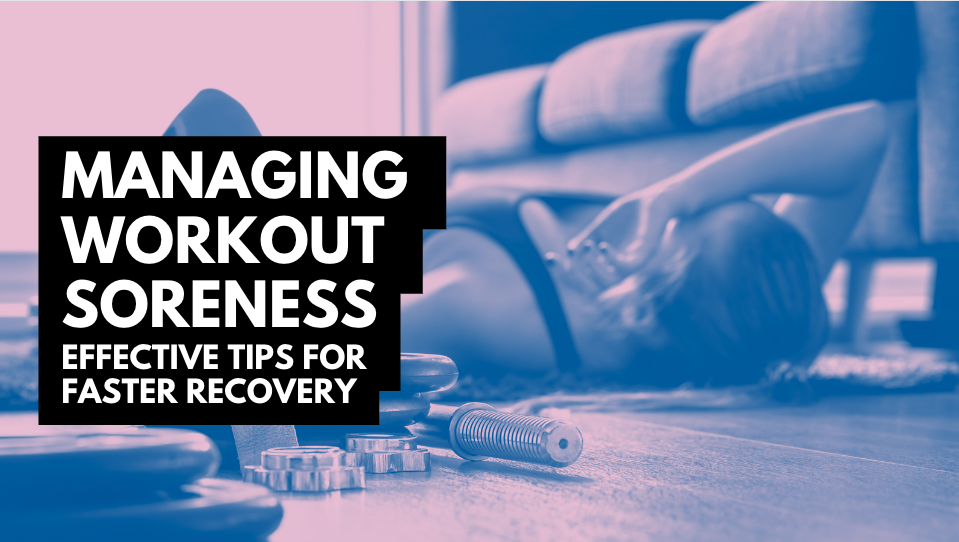
by wf_admin | Jul 18, 2023 | Blogs
Rest and recovery play a crucial role in our overall well-being. In today’s fast-paced world, it’s easy to overlook the importance of taking a break and allowing our bodies and minds to rejuvenate. However, incorporating regular rest days and prioritizing recovery can have numerous benefits for our physical and mental health. This article will explore the significance of rest and recovery, highlighting the advantages they offer and why they should be an integral part of our wellness routine.
The Importance of Rest
Rest is not merely a luxury; it is a necessity. Our bodies and minds require adequate rest to function optimally. When we engage in strenuous physical activities or mentally demanding tasks, our energy reserves become depleted. Without proper rest, we risk burnout, decreased productivity, and compromised health. Therefore, taking regular breaks and allowing ourselves to recharge is essential.
Physical Benefits
Rest days are not just about lounging on the couch; they provide an opportunity for our bodies to repair and rebuild. When we exercise, our muscles undergo microscopic damage, and rest is crucial for muscle recovery and growth. It allows time for the body to repair damaged tissues, replenish energy stores, and reduce the risk of injuries.
Moreover, rest plays a vital role in regulating our hormones. Lack of sleep and continuous physical exertion can disrupt hormonal balance, leading to increased stress levels, impaired immune function, and hindered progress in achieving fitness goals. By incorporating rest days into our exercise routine, we give our bodies a chance to restore hormonal balance, enhance immune function, and promote overall well-being.
Mental and Emotional Benefits
In addition to physical benefits, rest also has a profound impact on our mental and emotional well-being. Continuous work or study without breaks can lead to mental fatigue, decreased concentration, and decreased cognitive performance. Taking regular breaks allows our minds to recharge, leading to improved focus, creativity, and productivity.
Furthermore, rest promotes emotional stability and resilience. When we are constantly engaged in demanding activities, stress levels can soar, and our mental health can suffer. Taking time off helps reduce stress, alleviate anxiety and depression symptoms, and improve our overall mood. It provides an opportunity for self-reflection, introspection, and fostering a healthy work-life balance.
The Power of Recovery
While rest days are essential, recovery encompasses a broader scope, incorporating various practices and techniques that aid in our overall rejuvenation. Here, we will explore some powerful recovery strategies that can amplify the benefits of rest.
Sleep and Restful Nights
Quality sleep is a cornerstone of recovery. During sleep, our bodies engage in crucial restorative processes, including muscle repair, hormone regulation, and memory consolidation. By prioritizing adequate sleep, typically around 7-9 hours per night for adults, we allow our bodies to fully recover, promoting physical, mental, and emotional well-being.
Nutrition and Hydration
Proper nutrition and hydration are vital for recovery. Consuming a balanced diet rich in essential nutrients provides our bodies with the fuel needed for repair and replenishment. Additionally, staying hydrated optimizes bodily functions, supports muscle recovery, and aids in the removal of toxins.
Active Recovery
While rest days often involve taking a break from intense workouts, engaging in active recovery activities can still be beneficial. Low-impact exercises like yoga, stretching, or light walks can improve blood circulation, reduce muscle soreness, and enhance flexibility. These activities promote recovery without placing excessive stress on the body.
Mindfulness and Stress Management
Recovery is not limited to physical aspects; it also encompasses mental and emotional rejuvenation. Incorporating mindfulness practices, such as meditation, deep breathing exercises, or journaling, can help reduce stress, enhance self-awareness, and improve overall well-being.

by wf_admin | Jul 13, 2023 | Blogs
When it comes to engaging in regular exercise, one of the common challenges many people face is dealing with post-workout muscle soreness. This discomfort can often hinder our ability to perform daily tasks and can even discourage us from sticking to our fitness routine. However, with the right strategies and approaches, it is possible to effectively manage workout soreness and promote faster recovery. In this article, we will explore various tips and techniques to help you alleviate soreness, optimize your recovery process, and get back to your workout routine feeling stronger and more energized.
Understanding Workout Soreness
Before we delve into the strategies to manage workout soreness, it is essential to understand why it occurs in the first place. During intense physical activity, such as weightlifting, running, or high-intensity interval training, our muscles experience microscopic damage at the cellular level. This damage triggers an inflammatory response and leads to the sensation of soreness and stiffness, commonly known as delayed onset muscle soreness (DOMS).
DOMS typically manifests itself within 24 to 48 hours after exercise and can last for several days. It is important to note that while soreness can be uncomfortable, it is a natural part of the muscle repair process and indicates that your body is adapting and getting stronger. With that said, let’s explore some effective strategies to manage workout soreness and promote faster recovery.
1. Warm-Up and Cool-Down
Properly warming up before a workout and cooling down afterward are essential components of any exercise routine. A dynamic warm-up routine, which includes activities like light jogging, stretching, or performing dynamic movements related to your workout, helps increase blood flow to the muscles and prepares them for the upcoming physical exertion.
Similarly, a cool-down session involving static stretching and gentle movements helps gradually bring your heart rate down and aids in the removal of metabolic waste products from the muscles. By incorporating warm-up and cool-down exercises into your workout routine, you can minimize the intensity and duration of workout soreness.
2. Gradual Progression
While it may be tempting to push yourself to the limit during each workout session, it’s important to gradually increase the intensity and duration of your exercises. Sudden and significant changes in your workout routine can lead to excessive muscle damage and prolonged soreness.
By progressively challenging your muscles and allowing them time to adapt, you can minimize the severity of soreness while still making consistent progress. Consider incorporating a mix of low, moderate, and high-intensity workouts into your training plan and gradually increase the intensity as your fitness level improves.
3. Optimal Nutrition
Fueling your body with the right nutrients is crucial for optimal recovery and reducing workout soreness. Consuming a well-balanced diet that includes an adequate amount of protein, carbohydrates, and healthy fats provides your muscles with the necessary building blocks for repair and growth.
Protein plays a particularly important role in muscle recovery as it provides the amino acids needed for tissue repair. Including lean sources of protein such as chicken, fish, eggs, or plant-based alternatives in your meals can aid in reducing soreness and promoting faster recovery.
4. Hydration
Staying hydrated before, during, and after your workout is essential for overall health and recovery. Dehydration can exacerbate muscle soreness and delay the healing process. Make sure to drink an adequate amount of water throughout the day and consider consuming electrolyte-rich beverages, especially during intense workouts or in hot weather conditions.
5. Active Recovery
Engaging in light physical activity on your rest days can actually help alleviate workout soreness. Active recovery promotes blood circulation, which aids in flushing out metabolic waste products and delivering oxygen and nutrients to the muscles. This can be achieved through activities like gentle stretching, walking, swimming, or practicing yoga. Active recovery not only reduces soreness but also helps prevent muscle stiffness and promotes faster healing.
6. Massage and Foam Rolling
Massage therapy and foam rolling are effective techniques for relieving muscle soreness and promoting recovery. Massage helps increase blood circulation, reduces muscle tension, and accelerates the removal of metabolic waste products. You can either seek professional massage therapy or use self-massage techniques such as using a foam roller, tennis ball, or massage stick to target specific muscle groups.
Foam rolling, in particular, can help release muscle knots and trigger points, improving flexibility and reducing soreness. Incorporating these techniques into your post-workout routine can greatly contribute to managing workout soreness.
7. Quality Sleep
Adequate sleep is often underestimated when it comes to muscle recovery. During sleep, the body releases growth hormone, which plays a crucial role in tissue repair and regeneration. Aim for 7-9 hours of uninterrupted sleep each night to optimize your recovery process and minimize workout soreness.
Creating a sleep-friendly environment, such as keeping your bedroom cool and dark, avoiding electronic devices before bed, and establishing a consistent sleep routine, can contribute to better sleep quality and overall recovery.
8. Utilize Recovery Techniques
In addition to the strategies mentioned above, there are various recovery techniques that can help alleviate soreness and promote faster recovery. Some popular options include:
- Cold Therapy: Applying ice packs or taking cold showers can help reduce inflammation and numb the area, providing temporary relief from soreness.
- Compression Garments: Wearing compression sleeves or garments can improve blood flow and reduce swelling, aiding in the recovery process.
- Epsom Salt Baths: Soaking in a warm bath with Epsom salt can help relax muscles, relieve tension, and reduce soreness.
- Anti-inflammatory Foods: Incorporating foods with anti-inflammatory properties, such as turmeric, ginger, berries, and leafy greens, into your diet can help minimize workout-induced inflammation.
Managing workout soreness is essential for maintaining a consistent exercise routine and achieving your fitness goals. By implementing the strategies mentioned above, including proper warm-up and cool-down, gradual progression, optimal nutrition, hydration, active recovery, massage and foam rolling, quality sleep, and utilizing recovery techniques, you can effectively alleviate muscle soreness and promote faster recovery.
Remember, while soreness is a normal part of the muscle repair process, excessive or prolonged soreness may indicate overtraining or an underlying injury. If you experience severe pain or persistent soreness, it is advisable to consult with a healthcare professional.
Incorporate these tips into your fitness journey, and soon you’ll find yourself able to tackle your workouts with more ease and recover faster, allowing you to achieve your fitness goals. Don’t let soreness hold you back; take proactive steps to manage it and keep pushing forward.


